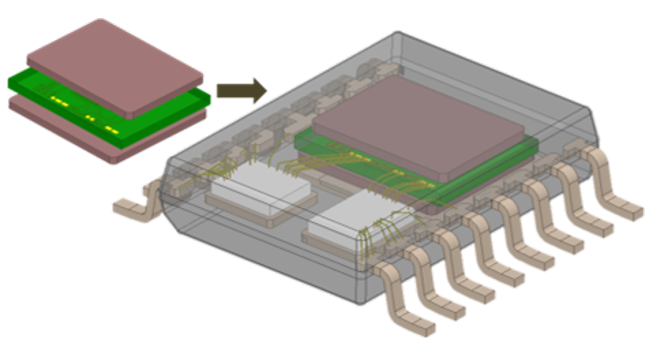SLYY204C January 2021 – February 2024 AMC1300 , AMC1302 , AMC1302-Q1 , AMC1305M25-Q1 , AMC1311 , AMC1311-Q1 , AMC131M03-Q1 , AMC1336 , AMC1336-Q1 , AMC1350 , AMC1411 , AMC3301 , AMC3301-Q1 , AMC3330 , AMC3330-Q1 , AMC3336 , AMC3336-Q1 , ISOW1044 , ISOW1412 , ISOW7741 , ISOW7840 , ISOW7841 , ISOW7841A-Q1 , ISOW7842 , ISOW7843 , ISOW7844 , UCC12040 , UCC12041-Q1 , UCC12050 , UCC12051-Q1 , UCC14130-Q1 , UCC14131-Q1 , UCC14140-Q1 , UCC14141-Q1 , UCC14240-Q1 , UCC14241-Q1 , UCC14340-Q1 , UCC14341-Q1 , UCC15240-Q1 , UCC15241-Q1 , UCC21222-Q1 , UCC21530-Q1 , UCC21540 , UCC21710-Q1 , UCC21750-Q1 , UCC23513 , UCC25800-Q1 , UCC5870-Q1
Magnetic isolation
While capacitive isolators are popular for low-voltage analog signaling, digital signal transmission or applications requiring limited power transfer (<100 µW), integrated IC magnetic isolation has advantages in applications that require high-frequency DC/DC power conversion. One particular advantage of IC transformer-coupled isolation is the ability to transfer power in excess of hundreds of milliwatts, eliminating the need for a secondary-side bias supply in most applications. It is also possible to use magnetic isolation to send high-frequency signals. In systems that need to send both power and data, you can use the same transformer winding coils for power and the signal needs, as shown in Figure 8.
 Figure 8 Using magnetic isolation to
send both power and signals reliably across an isolation barrier.
Figure 8 Using magnetic isolation to
send both power and signals reliably across an isolation barrier.TI uses a proprietary multichip module approach for magnetic isolation, co-packaging a high-performance planar transformer with an isolated power stage and dedicated controller die. TI can build these transformers with either a high-performance ferrite core to improve coupling and transformer efficiency, or an air core to save cost and complexity when the application requires only modest power transfer.
Figure 9 is one example of a dual-die multichip module that uses specialized control mechanisms, clocking schemes and a high-Q integrated planar transformer to provide low radiated emissions and high efficiency while also providing exceptional thermal performance. The transformer topology may consist of optional top and bottom ferrite plates, with TI’s proprietary thin-film polymer laminate array as the insulation barrier. The transformer configuration shown in Figure 9 is an example of transformer windings contained within the polymer laminate, sandwiched between two parallel ferrite plates.
 Figure 9 Magnetic coupling
ferrite-plated high-performance transformer.
Figure 9 Magnetic coupling
ferrite-plated high-performance transformer.In many applications, the amount of power needed across the isolation barrier is modest (sub-100 mW). For these applications, TI has developed a technology for creating high-performance air-core transformers. TI’s air-core transformers are similar to the technology shown in Figure 9, but without the ferrite plates.
All of TI’s transformers (both air core and ferrite plated) employ shielding techniques to provide better radiated EMI performance. Employing EMI mitigation techniques at the package level reduces the need for additional board-level filtering to meet the limits of conducted and radiated emissions standards.
A single isolation solution may not fit every application, making it necessary to understand the different parameters and specifications while balancing design trade-offs.
Learn about essential isolation parameters, certifications, and how to design and troubleshoot with each type of device by watching the TI Precision Labs – Isolation training series.